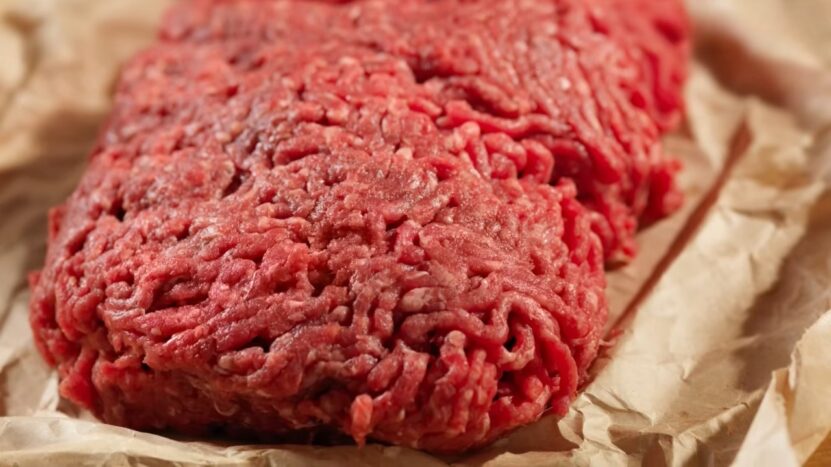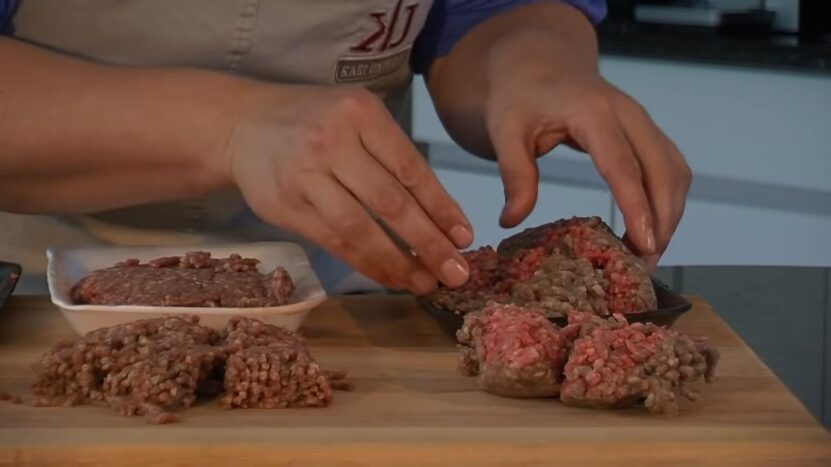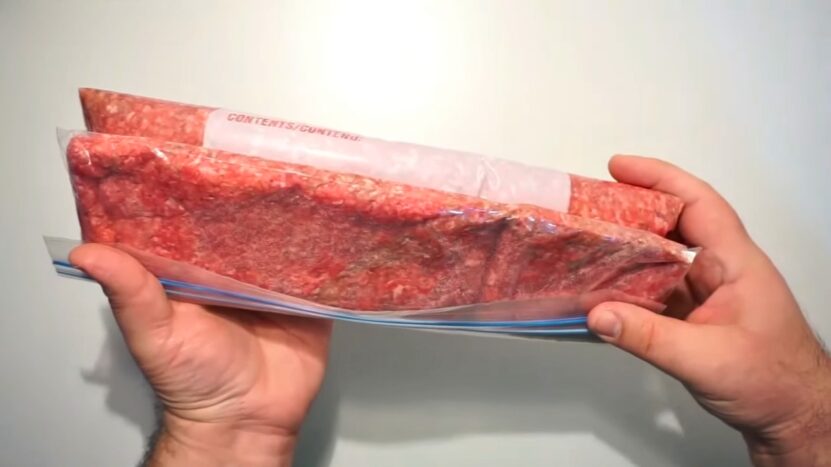Have you ever found yourself standing in the kitchen, wondering if that pack of ground beef in the fridge is still good to use? I know the feeling all too well! It’s happened to me more times than I can count. I’ve had my fair share of unfortunate encounters with spoiled meat, and let me tell you, it’s not a pleasant experience!
But fear not, because there are five easy-to-spot signs that can help you determine whether your meat is still safe to cook and enjoy. So, if you want to avoid any potential food mishaps and ensure you’re serving up the freshest and tastiest meals, keep on reading.
1. Check the Color

One of the initial signs of freshness in ground beef is its color, which can undergo several changes depending on its age and exposure to air.
Normal vs. Abnormal Colors
Fresh off the shelf, ground beef exudes a vibrant, cherry-red hue which is due to its exposure to oxygen in packaging. On the other hand, beef that hasn’t been exposed to oxygen will be a deeper purplish-red. Over time, as the beef begins to spoil, it can turn a dull gray or even brown.
A slight brown hue might not raise alarm bells as it can merely indicate prolonged exposure to air. However, a widespread gray tone suggests that the meat has been sitting out for too long and is past its prime.
The ‘Rainbow’ Effect
Ever noticed an iridescent sheen on your beef? This rainbow effect can sometimes be seen in meat, especially if it’s starting to go bad. While light diffraction on the meat’s surface sometimes causes this, it’s a good idea to treat it with suspicion. Especially if you see this combined with any other spoilage indicators, it’s time to double-check its freshness.
2. Sniff It Out
Your olfactory senses are incredibly powerful when it comes to detecting freshness.
Fresh Beef Smell
When you open a fresh pack of ground beef, it should remind you of raw meat, possessing a light, slightly iron-like smell. This metallic undertone is due to the iron content in the meat and the moisture. While it should be noticeable, it should never be overpowering or unpleasant.
Sour or Rancid Odors
As beef deteriorates, the pleasant fresh smell is replaced with something far more pungent. If your beef smells sour, overly strong, or even slightly rancid, it’s a clear indicator that the meat has gone bad. Such odors arise from bacterial growth, and consuming such meat can be hazardous.
3. Examine the Texture

Ground beef has a distinct texture, which can change when the meat begins to spoil.
Smooth and Moist
When you handle fresh meat, it should have a fine granularity, feeling moist but not overly wet. It should mold easily, maintaining its shape without being sticky or leaving any residue on your fingers.
Sticky or Slimy Residue
Spoilage can make the beef develop a tacky, slimy surface. This sliminess is due to bacterial colonies growing on it. If handling the meat leaves your fingers with a noticeable residue or the meat feels excessively slippery, it’s time to discard it.
4. Check the Expiry Date
The printed date serves as a preliminary guideline but isn’t a definitive measure of freshness.
Sell-By vs. Use-By
The “sell-by” date is primarily for retailers, indicating the last day the product should be on display. The “use-by” or “best-by” date, meanwhile, gives consumers an idea of the last recommended day for consumption at peak quality. Yet, other spoilage signs can appear before this date if the meat wasn’t stored properly.
Trust But Verify
Dates are a starting point, but other factors like fluctuating temperatures, light exposure, and how often the beef was handled can affect its longevity. Use the printed date as a baseline, but always corroborate with your senses.
5. Mold and Discoloration
Mold is an unequivocal sign of spoilage.
Visible Signs
It’s crucial to scrutinize your meat for any mold growth. Mold on meat may manifest as fuzzy spots, ranging in color from white to green, even black. Even if only a section seems affected, it’s wise to discard the entire package as mold spores can spread easily.
Hidden Threats
Mold doesn’t always make its presence visible immediately. Sometimes, it begins beneath the surface. If your beef has been sitting for a long duration and exhibits any of the previously mentioned signs, it’s highly probable that mold is lurking below the visible layer, making it unsafe for consumption.
Potential Risks of Eating Bad Meat
Ground beef, like other meats, is susceptible to various bacterial contaminations. Consuming spoiled or improperly cooked beef can pose severe health risks due to these bacteria.
| Condition | Associated Bacterium | Common Symptoms | Specific Complications |
|---|---|---|---|
| Food Poisoning | Various |
|
Self-limiting, but severe in vulnerable populations |
| E. coli Infection | Escherichia coli | Diarrheal illnesses | Hemolytic uremic syndrome (kidney failure) |
| Salmonellosis | Salmonella |
|
Reactive arthritis |
| Campylobacteriosis | Campylobacter |
|
Guillain-Barré syndrome (nervous system) |
| Listeriosis | Listeria monocytogenes |
|
Meningitis, Septicemia, miscarriages in pregnant women |
How to Store It Properly?

Storing the beef properly is essential not only to retain its freshness and flavor but also to ensure the safety of the meals you prepare. Due to its fine texture and the increased surface area exposed to potential contaminants, ground beef can spoil faster than whole cuts of meat.
Here’s a comprehensive guide on how to store it to maximize its shelf life and keep it safe for consumption.
Step 1: Fresh Purchases – Choose Last
When grocery shopping, make meat purchases towards the end of your trip. This minimizes the time the meat stays at room temperature, reducing the risk of bacterial growth.
Step 2: Temperature Control
Always ensure that the supermarket’s meat section is chilled and adequately refrigerated. Cold temperatures slow down bacterial growth, ensuring the beef you purchase is fresh.
Step 3: Check Expiry Dates
Always check the “sell-by” or “use-by” dates on the package. This will give you an idea of its freshness and how soon you should consume or freeze it.
Step 4: Refrigeration: Quick and Cold
Once home, immediately place the beef in the refrigerator if you plan to use it within 1-2 days.
Original Packaging
It’s okay to store the meat in its original packaging for short periods. However, if you’re freezing it or storing it for longer, consider repackaging.
Optimal Temperature
Ensure your refrigerator’s temperature is set at 34°F (1°C) or below. Bacteria multiply rapidly between 40°F (4.4°C) and 140°F (60°C), known as the “danger zone.”
Step 5: Freezing: For Longer Storage
If you won’t use the meat within a couple of days, it’s best to freeze it.
Air-Tight Packaging
Remove the beef from its store packaging, then wrap it in plastic wrap, followed by aluminum foil or a freezer bag. Push out as much air as possible to prevent freezer burn and preserve flavor.
Label with Dates
Using a permanent marker, label the package with the date and type of meat. This helps you keep track of how long the beef has been in the freezer.
Step 6: Thawing
When you’re ready to use your frozen ground beef, proper thawing is crucial to both quality and safety.
Refrigerator Thawing
The safest way to thaw ground beef is in the refrigerator. Depending on the quantity, it can take a day or more. Once thawed, use it within two days.
Cold Water Thawing
If you’re in a hurry, you can thaw the meat by sealing it in a waterproof plastic bag and submerging it in cold water. Change the water every 30 minutes and cook the beef immediately after thawing.
FAQs:
Does washing the meat reduce the risk of spoilage?
No. In fact, washing can spread bacteria. It’s best to cook meat to the recommended temperature.
Can I refreeze thawed ground beef?
It’s safe to refreeze the meat that’s been thawed in the refrigerator, but there may be a loss in quality.
Why has my beef developed a grayish hue?
The meat can turn gray due to a lack of oxygen. While this can be normal, always check for other signs of spoilage.
Can I the meat that’s been in the fridge for a week?
It’s risky. Ground beef is best consumed within 1-2 days of refrigeration.
How can I tell if frozen meat has gone bad?
Look for freezer burn, discoloration, or an off smell once thawed.
In Conclusion
With the range of sensory tests detailed above, you’re now equipped to ensure that your ground beef is fresh and safe for consumption. Pay attention to color, smell, texture, and expiration dates, and check for mold.
That way you can confidently prepare dishes without compromising on safety. When in doubt, always opt for caution. The health and safety of you and your loved ones always come first. Bon appétit!
